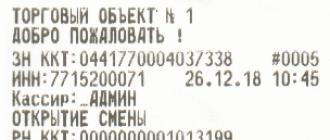Flash drives often break and, as a rule, the outer shell - the case - fails. How to revive the drive so that it will serve you for a long time? Read on for how to make a DIY flash drive case: step by step instructions.
Today we're going to look at a few questions:
- how to properly disassemble flash drives of different designs;
- what tools are needed for this;
- how to make a case for a flash drive.
In addition, we will tell you what materials at hand can be used to create a new case, and which ones are better not to use so as not to damage the media. At the end there will be small workshops on how to design this device in the form of a Lego cube and a lighter.
Flash drives are an integral part of modern life. Of course, there are various other kinds of storage media. Computers, laptops have long appeared in everyday life, in the end, some even use their smartphones for this. But despite this, these storage media do not lose their relevance: they can store large amounts of information, quickly and easily connect to various devices, and do not take up much space. They are used to store photos, videos, movies, music, and for many, this is an indispensable thing at work, for transferring reports, presentations and important documents.
Usually they are in a plastic "body", sometimes in silicone - manufacturers like to make such types in funny shapes like fruits, cartoon characters and TV shows. And much less often they are more impressive, for example, steel. Plastic data carriers, on the other hand, are easily damaged, they can crack from an unexpected fall, bend at a break, or crack when under a heavy object.
What is the way out of this situation? Spending money to buy a new device, time to transfer information? Why, if you can just read this article and learn how to create your own original case for a flash drive. In the possible options, you are limited only by the availability of materials and your imagination, the methods and types of home-made cases can be different: from a Lego cube or a piece of a bar left after repair, and ending with an ordinary cork. Some craftsmen create real works of art in various styles and even sell them. Since there are many options, we will look at the basic principles - how to properly remove a flash drive from an old "body", and how not to damage it, what tools you may need and what items can be used to create a new design, and what materials should not be used.

Removing a flash drive
So, let's begin! First, just in case, transfer all the content to another device. A flash drive is:
- whole;
- collapsible.
If the former have a visible gap in the case, then the latter look monolithic. But both of them can be easily disassembled, the main thing is to know how.
Let's start with the "whole" type. Its connector is connected by a latch to the board, and this latch is latched, and it is impossible to disconnect it in the usual way. We need a thin, flat screwdriver. Using this tool, we make a hole between the body and the latch. Carefully, so as not to damage anything, lightly pressing, swing up and down. Such holes must be made in three or four places where the connection goes, now we can easily remove it.

Now about how to remove the case from a "collapsible" flash drive. Such a drive is much simpler and its disassembly requires less effort: there is a small slot along the case that facilitates work. We will also need a thin pen screwdriver. Unlike the monolithic type, there is no latch here, but there are latches that we need to open. We insert a screwdriver into the groove and open the case using the same rocking method. The latches may break, but this will not cause any harm to the drive.
Making a case for a flash drive
Well, we dismantled the flash drive, and now we move on to the main task - how to make a case for a flash drive? Your homemade version, as mentioned earlier, can be of any kind - the main thing is to keep the functionality of the drive. Firstly, the item must be easily connected to the computer, and secondly, the materials must not damage its components.
That is, the protruding edges should not interfere with the connection to the USB port, since an incompletely inserted one may not work, and it is also necessary to avoid collision of components with hot glue, paint and other aggressive materials. The new case must be sealed and prevent moisture from entering the board. The easiest way to choose plastic. It is much more difficult to create a shell made of wood or metal, but it will definitely last a long time and will retain its “presentation”.

One of the options for the case - from electrical tape
We make a flash drive case from a lighter
We will consider the simplest option, made from an ordinary lighter. Almost everyone has an old used lighter lying around somewhere at home, and sometimes they have an interesting design. We will need a clerical knife, a glue gun, a lighter of a suitable size, a screwdriver with a 3 mm drill. Such a lighter is suitable so that a flash drive without a case fits completely into it and only the USB port protrudes. Glue can be used any of those suitable for plastic.
First you need to release the remaining gas from the lighter, then make two holes in the bottom. Next, we make a cut with a knife along the contour framed by holes. Inside we install a USB flash drive and glue it with the case, remove the remaining glue. Our new drive enclosure is ready. We have an interesting and practical flash drive-lighter. As you can see, it is not difficult at all and does not take much time.

Flash drive - Lego cube
Another way to design a flash drive in an original way is to make it in the form of a Lego cube, which almost everyone has. We will need a few Lego blocks, a penknife, pliers, glue suitable for plastic, polish and sandpaper. First, we select cubes that are suitable in size for our flash drive. You can make a body of several cubes of different sizes and colors. We cut all the internal partitions with a penknife, now we break them out with pliers. We use the second same cube for the lid, cutting off everything to the top. At the end, we cut a hole for the USB connector, adjust, install the device.

Using the remains of the brick, we fix the flash drive so that it lies parallel. We fill the empty space, for this you can use transparent silicone. So that there is no gap between the base part and the cover, we rub the joint with sandpaper, glue it. After the glue dries, remove the residue using sandpaper. With the help of a polish, we complete the work.

Your exclusive do-it-yourself flash drive is ready!
So, as you may have noticed, making a case for a flash drive is not so difficult. The main advantage of making it yourself is that it will be truly original. After all, before proceeding with its implementation, you turn on your imagination, choose materials from improvised and more accessible to you, put them together and as a result you have an original and individual flash drive, which 100% will not go unnoticed. It will certainly emphasize your individuality and creativity.
USB flash drive- a common device that everyone who has a personal computer at home probably has. There are a wide variety of flash drives available today. As a rule, they have a plastic or metal case, although there are more original options. But what to do if the case of your flash drive is damaged or for some reason ceased to suit you, but you do not want to buy a new one? In this article, we will show you how to replace the old plastic or metal case of your flash drive with a new wooden one.
How to make a case for a flash drive?
In order to make a wooden case for a flash drive, we need the following tools:
USB flash drive without case.
Piece of wood.
Drill or other drilling device.
Sandpaper.
Silicone.
Clips, 2 pcs.
Pencil.
Let's start making!
1. First, determine the size of the case you need and use a saw to cut a rectangle of the appropriate size from a piece of wood using the marked marks.


3. Using a drilling device, cut non-through holes in the large and medium pieces of wood and a through hole in the smallest piece. The holes should be sized to easily fit and hold the USB stick. In the middle part, which will serve as a lid, small gaps should be made inside the hole so that the lid can close tightly and open easily.
4. Insert the USB flash drive into the through hole of the small piece so that the connector sticks out on one side and the rest of the flash drive is on the other. If the flash drive does not sit tightly in the hole, fix it with silicone.

5. Now stick the protruding long part of the flash drive into the hole of the largest piece, after applying hot glue to both parts and using a press, glue them into one case. It is necessary to use a press so that both parts are tightly fastened together, and after grinding, no gaps are visible between them.

6. Now carefully sand the entire body with sandpaper to give it a neater and smoother look. You can also cover the case with paint or varnish. Our original wooden flash drive is ready!
Modification of computers and computer accessories has always been and remains popular around the world. Modification of flash drives requires special attention, as this allows you to get a unique accessory. We present to your attention a material that is devoted to a review of a video on modding an old and shabby flash drive.
What do we need:
- new building;
- 300 ohm resistor;
- light;
- flash drive;
- glue gun;
- soldering iron.

As a new body, the author of the video uses a rubber toy bull.
First of all, you need to disassemble the flash drive.

Next, you need to take care of the body. To do this, we put a toy bull flash drive board. We take a clerical knife and mark on the toy the place of the cover of the new case.

After that, we cut off the toy at the mark, thus obtaining two parts.

The steer, which the author of the idea uses as a body, turned out to be empty. This will greatly facilitate the work of inserting a flash drive into the case.

Now we take a screwdriver and two drills for 3 and 2 mm. With the first drill we drill the mouth of the bull, and with the second - the eyes.


The next step is to solder the resistor to the positive terminal of the LED bulb.

Then you need to solder the LED to the flash drive board. The positive contact, that is, the contact that is soldered to the resistor, is connected to the first leg, and the negative contact to the fourth. Before soldering, you need to put heat shrink on the resistor on the LED contacts.



It remains only to carefully seal the flash drive board in the new case. To do this, you just need to insert the board into the case and seal it with a copious amount of glue from the glue gun.


In the second part of the case, that is, the cover, you can stick a small magnet, which will allow you to quickly close the flash drive after using it.
How to make a flash drive?
Our article, dear reader, will tell you about a very exciting activity that can even turn into a hobby. Today, we will deal with how a flash drive is made, its internal structure, various engineering techniques for translating it into real life. After reading our article, you will be able to assemble a flash drive from scratch with your own hands from almost any material. So let's get started:
Flash drive with your own hands!
I think everyone understands that if these "own hands" grow not from the shoulders, but from another place, then it is best to transfer the design of the flash drive to your more skilled comrade. If, however, your case is the opposite, then here's what you can do.
The essence of creating a new flash drive is to disassemble the old one. Why is this needed? The fact is that the electronic filling of the old flash drive will be the main component of your future product. Although, if you are able to solder a working electronic circuit yourself, you are welcome. So, the first step is to get the contents from the old flash drive and "dress" it in a new case.

As already noted, this method of manufacturing the case is not the only one. Craftsmen who feel confident working with wood can use wooden blocks instead of a ruler. Undoubtedly, such material will be more reliable and durable. Do not forget that you can make various linings for the body of the flash drive. These can be metal strips, or plastic patterns from finished household appliances. All in your hands. In addition, you can try your hand at wood carving directly on the finished case, however, it will not be easy, given the very small size of our product.
A beautiful interesting flash drive looks much nicer and attracts people's attention. A funny flash drive is nice to hold in your hands. In order to make an interesting designer flash drive, you do not need a lot of time and money. And the result of the work justifies the expectations. Especially if the old flash drive is already worn out and it is very desirable to update it.
To remake a flash drive, you need a new case. In this video, a hollow cow is used. From the electronic filling, you will need a 300 ohm resistor and a red LED.
First you need to parse the contents of the flash drive. Having freed it from the old case, we are preparing a flash drive for placement in a new case. We mark the right place on the cow for division into two parts. In this case, you need to focus on the connector.
If the new body is hollow, then this makes the job easier. Otherwise, you will need to additionally prepare a place in the case to accommodate the electronic filling and connector. We cut the cow. Let's make holes in the toy in the area of the eyes and mouth. When our device is plugged into the computer connector, the eyes and mouth of the cow will glow with red light from the LED. This is an interesting idea for this craft, which I decided to make myself.
Next, we connect the positive contact of the LED to our resistor. In order not to confuse the polarity, be guided by a simple rule - a large cup is a minus, a small one, respectively, is a plus. After that, we need to connect the positive contact to the flash drive to the first leg on the right, and the minus to the last fourth leg.
Now you just need to carefully fix the board with glue in the new case. To do this, you need to carefully place the board in a case and pour in a large amount of hot melt adhesive. If desired, you can equip the lid of the updated designer flash drive with a magnet. With it, it will close perfectly after use.
Do-it-yourself flash drive modding.
Creating unusual cases for flash drives has long been a separate trend in modding. Many craftsmen work exclusively with flash drives and even sell their mods through online stores and auctions. It would seem that an ordinary compact USB drive - why exactly did it become so popular? Before the advent of flash drives, almost every PC was equipped with a floppy drive for reading and writing floppy disks. Unfortunately, floppy disks were not very convenient and severely limited the capabilities of users. The flash drive has become a step forward - a compact device, characterized by reliability, lightness and the ability to accommodate a large amount of memory. A flash drive has become a constant companion of many people, because it is very inconvenient to carry disks or bulky external HDDs with you and it is much easier to take a neat keychain that stores all the necessary information. Since this thing is always at hand, many began to think about the external design and style of USB drives. Modding a flash drive does not require a huge amount of materials, a lot of money and time. There are a huge number of ways to decorate your flash drive or make it a full-fledged custom case with a unique design, and even novice and inexperienced modders can do many of them.
Modding flash drives in steampunk style.
Steampunk appeared relatively recently, but with each its popularity is only growing. Many designers have even begun to focus exclusively on steampunk, as the demand for such unusual and original things is growing at a tremendous rate. In the modding of flash drives, the steampunk style occupies a special niche. The direction of alternative historical steampunk is especially popular, which is based on stylization for the real historical world of the 19th - early 20th centuries.
Modder Rob Smith, also known as Back2root, became known in the foreign modding scene precisely because of his high-quality work on creating custom cases for flash drives. For all his mods, he uses wood, elements from old mechanical watches for styling, and small inserts of copper and brass. Each USB drive has an interesting design and comfortable housing. Here, for example, is a stylish flash drive capable of holding up to 16 GB of information in a new steampunk-style case:



Almost all flash drive mods from Back2root have a similar case design. First, the modder removes the flash drive from the standard case, then makes a wooden base, and all the decorative elements are attached to this base. Here are some more photos of the most interesting projects of this modder:





It is worth noting that Rob Smith is also engaged in modding very compact flash drives. An example of such modding is a stylish steampunk pendant. Inside there is a 4 GB flash drive:


All projects in the photos above refer to the modding of flash drives in the steampunk style, which is especially popular among both Western modders and domestic craftsmen. Modder Shipton Bellinger, whom we talked about in detail in one of our articles, is also interested in steampunk mods for USB drives. It works according to the same scheme - first the wooden base is made, then the body is decorated with additional elements, but there are some differences from the work of Rob Smith. For example, as you have seen, Rob Smith installs decorative elements inside a wooden base, while Shipton Bellinger prefers to mount them directly to the surface. Another, no less important difference is that Rob's projects are more of a clockpunk style, since they use only elements from mechanical watches for decoration, and in Shipton's fashions, you can see copper tubes and a huge number of movable handles and rings. In other words, it’s easier to see everything with your own eyes:


The modder, also known as BasementFoundry, has been collecting neat and stylish mods of steampunk flash drives for many years. The main rule of his projects is that the case should be not only beautiful, but also comfortable. That is why the modder practically does not use additional decorative elements in his projects. The base is most often made of a copper tube, sometimes durable glass is used in the work. So, let's take a look at one of the most popular projects of this modder. Copper tubes, which at first glance seem completely unnecessary, actually serve as latches for the flash drive cover. Especially for this, the modder cuts out a small elastic band of the required diameter for the lid:



Of course, talking about modding flash drives in the steampunk style, we could not forget about Steamworkshop, which makes stylish custom mods and puts up many of its works for sale through online stores. Like many modders, Steamworkshop has its own, one might say, unique style of modding flash drives. Many techniques are used from project to project, but let's not get ahead of ourselves and look at projects in more detail. The main materials for modding are copper, brass, durable glass and many additional decorative elements - from gears from mechanical watches to various springs, small screws and rivets. Most mods are provided with rubber seals by the modder to make them waterproof. In almost every flash drive from Steamworkshop, a window is cut out in the case. Through it, you can often see a small quartz crystal illuminated by an LED (this touch was a kind of calling card of Steamworkshop for a long time), but already in new projects, the modder tried to change the established traditions and experiment not only with the forms of cases for flash drives, but also with ways to stylize them. So let's take a look at the photos:



Often, modders use some old, unnecessary things at first glance as the basis for the case. So did Steampunknation. He used an old vacuum tube to create a custom case for a flash drive. Inside, the drive was covered with a fine metal mesh, and also illuminated by an LED. It turned out stylish and original work. The only negative of this project is the relatively fragile case.


The modder under the nickname autumnsteam also sometimes deals with flash drives. The main difference between his works is the use of old brooches and pendants. He especially succeeds in the fashion of compact USB drives - the base is made of a thick sheet of metal, and decorative elements are attached to it:

https://www.liveinternet.ru/users/megaline/post180072730






